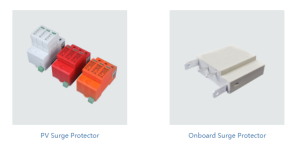In an era abundant with electronic devices, each demanding its slice of power, surge protectors have emerged as household necessities. They serve a dual function: extending the number of available outlets and safeguarding electronics from sudden voltage spikes. However, a common query arises: can these handy devices be pushed beyond their limits? Indeed, there's a threshold to how much a surge protector can handle, and understanding this is pivotal for maintaining the efficacy of your home’s lightning protection.
Surge protectors are not mere extensions of your wall outlet. Beyond providing additional plug-in spots, they absorb excess electrical energy, preventing it from passing through and damaging connected devices. This mechanism is a cornerstone of lightning protection, as it defends against abrupt surges caused by lightning strikes or other disruptions. Despite their protective nature, surge protectors harbor a significant limitation: they are vulnerable to overload.
Overloading a surge protector transpires when the total electrical demand of all plugged-in devices surpasses the unit's capacity. This capacity is defined in terms of amperage, often indicated on the protector itself or its packaging. When you plug in too many devices, especially high-powered ones, the excessive current can strain the surge protector. This not only undermines its ability to shield electronics during a power surge but also poses fire risks, as the unit may overheat or short-circuit.

Beyond the immediate hazard of potential fire, there's an insidious risk associated with overloading. When a surge protector is maxed out, its effectiveness as a part of your home’s lightning protection can become compromised. In the event of a substantial electrical surge, such as those from a lightning strike, an overloaded protector may fail completely. This scenario could result in expensive damage to connected devices, or worse, a fire.
Avoiding these risks doesn't require technical expertise but does call for mindfulness and basic knowledge. Users should note the wattage ratings of their devices—information typically found on the device label or in its manual—and ensure that the total does not exceed the surge protector's rating. Additionally, it's wise to provide some room for error rather than operating right at the capacity limit.
Furthermore, the quality of the surge protector is paramount. Not all surge protectors are created equal, and low-quality options may offer less protection, to begin with. Investing in a higher-quality, reliable surge protector from a reputable brand ensures more comprehensive safety for your valuable electronics.
Adherence to these practices doesn't just prevent potential disasters; it also prolongs the lifespan of your surge protectors and connected devices. In recognizing that there is indeed a limit to how much you can plug into a surge protector, and respecting that limit, you ensure that these tools can effectively perform their role in your home's defense strategy against electrical surges. This understanding is fundamental to maintaining a safe, efficient, and protected home environment.